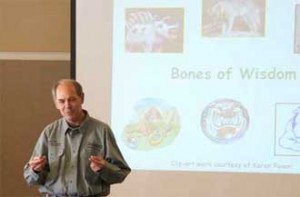 Conservation Action Planning (CAP) is a relatively simple, straightforward and proven approach for planning, implementing and measuring success for conservation projects. CAP was developed and refined over 20 years by Greg Low and others at The Nature Conservancy, and has been applied at over 1000 conservation projects.
Conservation Action Planning (CAP) is a relatively simple, straightforward and proven approach for planning, implementing and measuring success for conservation projects. CAP was developed and refined over 20 years by Greg Low and others at The Nature Conservancy, and has been applied at over 1000 conservation projects.
CAP guides a landscape or project at any scale to:
- identify focal ecological systems, species, or other resources of interest
- determine the key attributes of each resource’s long-term health
- determine current condition
- identify the most critical threats likely to impair future condition
- develop strategies to abate the threats and/or restore the resources
- implement the strategies, monitor the outcomes and use that information to adapt and learn throughout the life of the project.
The CAP methodology has been tested and deployed successfully by hundreds of teams working to conserve species, sites, ecosystems, landscapes, watersheds and seascapes across the globe. From a political boundary perspective, CAP has been applied by projects with a global, multi/national, country-based, state, province, municipality, village or community focus. From a resource-ownership boundary perspective, CAP has been applied for indigenous or communal, private, and government (federal, state, municipal) projects. While CAP was initially conceived and designed for planning and managing for biological resources, it is continuously adapted by practitioners and has been successfully used in planning for and managing cultural resources and other socioeconomic values.
A landscape conservation handbook with CAP methods and tools, along with CAP software, is freely distributed by Applied Conservation to any conservation practitioner in the hope that it will result in more focused and effective conservation action at any scale, any place.
Applied Conservation has also developed “turboCAP” — a streamlined and easy to use methodology, including a turboCAP Excel workbook. Additional information can be found in the How section or at https://sites.google.com/view/turbocap/home
